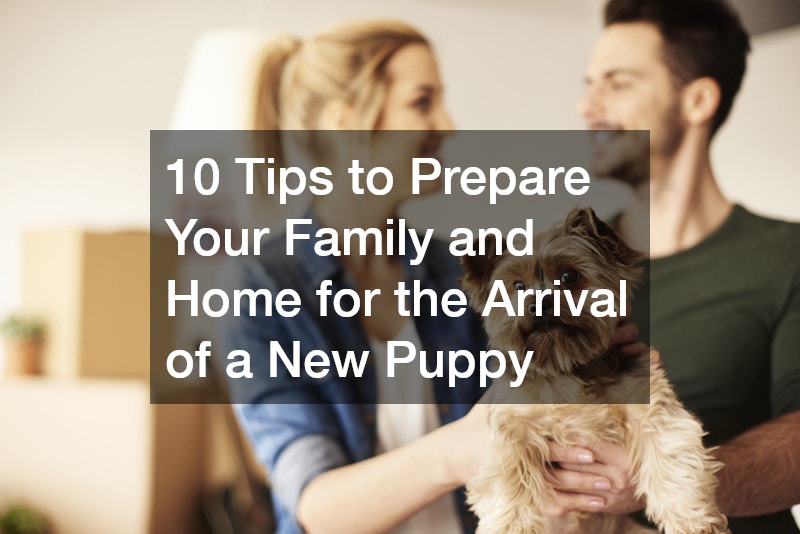

Welcoming a new puppy into your home is one of the most rewarding moments your family can experience, but it also comes with responsibilities that require thoughtful planning. From reorganizing your living space to establishing routines everyone can follow, preparation helps ensure a smooth and enjoyable transition. Because a new puppy is curious, energetic, and sensitive to its environment, taking the time to set up your home correctly makes early training easier and reduces unnecessary stress. The goal is to create a safe, comfortable, and supportive environment that helps your companion feel secure from the moment they arrive.
This guide walks you through ten essential areas of preparation, each designed to help simplify the process and address the needs of both your household and your new puppy. These topics include creating safe zones for rest, establishing healthy feeding habits, managing hygiene, and understanding the importance of early training. Many families underestimate how much organization and consistency benefit not just the dog, but everyone in the home. By preparing thoroughly, you prevent common setbacks while strengthening routines that will carry your dog into adulthood.
Beyond indoor adjustments, outdoor planning also plays a major role. Setting up your yard, considering travel and boarding needs, preparing for proper socialization, and ensuring a clean, pest-free environment all contribute to your dog’s long-term health and comfort. Each section is arranged in a logical order so you can follow the entire process from start to finish without feeling overwhelmed. When you take the right steps in advance, your family can confidently welcome a new puppy into an environment built to support learning, bonding, and a lifetime of companionship. With these thoughtful preparations in place, your household will be fully ready to embrace the joy and responsibility of raising a young dog.
1. Puppy-Proofing
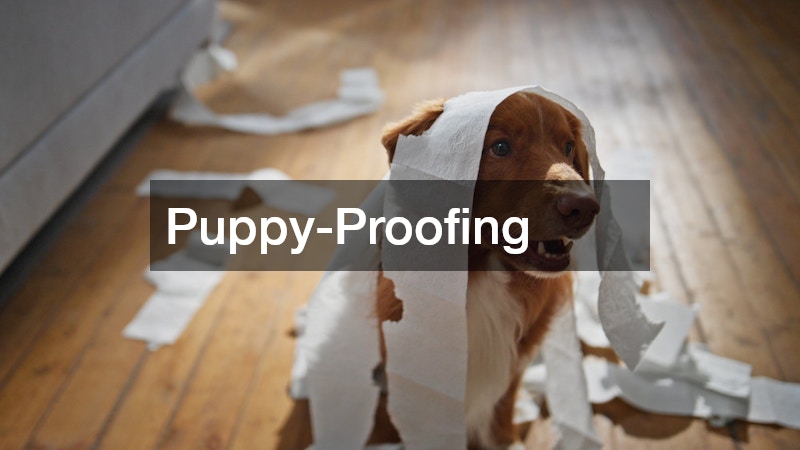
Creating a safe environment is one of the most important steps you can take before bringing home a new puppy, as young dogs tend to explore with enthusiasm and little awareness of danger. Ensuring your space is free of hazards helps prevent accidents and reduces stress during the adjustment phase. By eliminating risks early, you create an environment where a new puppy can learn and explore safely without constant interruption or correction.
Begin by clearing clutter, securing cords, and removing items that could be accidentally swallowed. This is also the perfect time to establish a yard routine, especially since dog poop removal becomes a daily responsibility once a new puppy joins your home. Evaluating the layout of your indoor and outdoor areas from your dog’s point of view will help you identify small but meaningful risks that may otherwise be overlooked.
After initial organizing, expand your focus to structural and environmental safety. Fix loose vents or screens, move hazardous materials out of reach, and block access to areas not meant for pets. By making intentional changes in advance, your household provides a secure and predictable space that sets a positive foundation for your new puppy’s development.
2. Safe Spaces
A dedicated rest area helps a new puppy feel grounded in an unfamiliar environment and gives them a sense of security when they need downtime. Busy households can be overwhelming, so creating a calm, predictable retreat is essential for healthy adjustment. Establishing this space early teaches your dog where to relax and helps regulate the excitement that can accompany their arrival.
Select a quiet, low-traffic area and equip it with comfortable bedding such as a supportive mattress that allows a new puppy to settle in with ease. Soft materials and a cozy atmosphere encourage better rest habits, which support growth and emotional regulation during the first few months. Keeping this space consistent helps reinforce routine and comfort as your dog adapts.
Over time, you can personalize the area with chew-safe toys and familiar scents that deepen the sense of belonging. This spot becomes a sanctuary for your new puppy, offering relaxation during busy household moments and providing a peaceful escape that supports healthy development.
3. Healthy Start
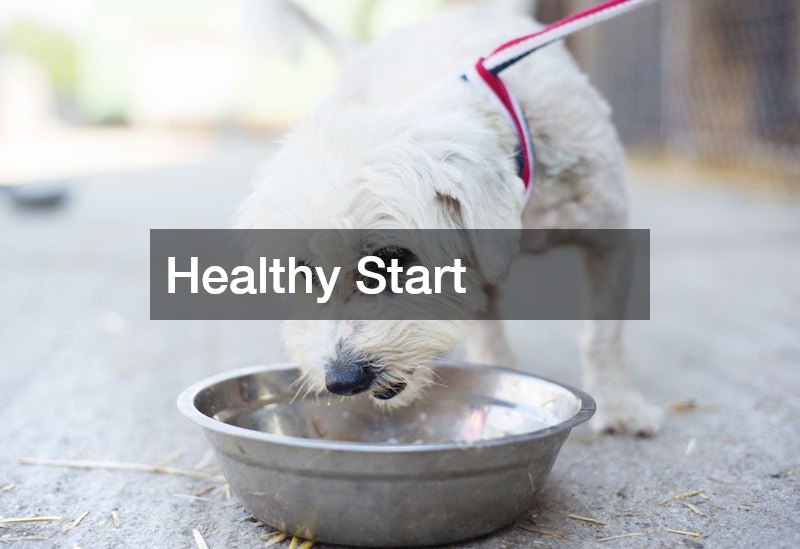
Nutrition is the cornerstone of long-term health, and establishing good habits early ensures your new puppy grows strong and resilient. Proper feeding routines also help set expectations around structure and behavior, making daily life smoother for both you and your pet. A focus on balanced meals supports physical growth, brain development, and steady energy levels.
Choosing the right animal feed is essential because young dogs require specific nutrients to support rapid development. Consult a veterinarian to determine the best formula for your new puppy, and divide meals into smaller portions throughout the day to help regulate digestion. By maintaining a clean feeding area and consistent schedule, your dog quickly learns what to expect during mealtime.
As your puppy grows, monitor their appetite, weight, and overall health so adjustments can be made as needed. Introduce treats sparingly and with purpose, making sure they support training without disrupting nutritional balance. Healthy eating routines help your new puppy form positive lifelong habits that reinforce well-being.
4. Clean & Fresh
Maintaining cleanliness plays a significant role in the health and comfort of a new puppy, especially during the early months when they are getting used to new routines. Regular cleaning helps control odors, maintains hygiene, and reduces the spread of bacteria that young animals may be more sensitive to. A fresh environment also helps reinforce training and improves your home’s overall atmosphere.
Incorporating a dog grooming service into your routine ensures your new puppy’s coat stays clean and healthy as they grow. Groomers can help you manage shedding, skin health, and nail care while teaching your dog to accept being handled. Early grooming experiences contribute to confidence and comfort over time.
As your dog adjusts, you’ll find that cleanliness extends beyond brushing and bathing. Regularly washing bedding, disinfecting surfaces, and managing clutter keeps your home inviting and safe for a new puppy. These habits support comfort, reduce allergens, and help your pet settle into a healthy lifestyle.
5. Health Check
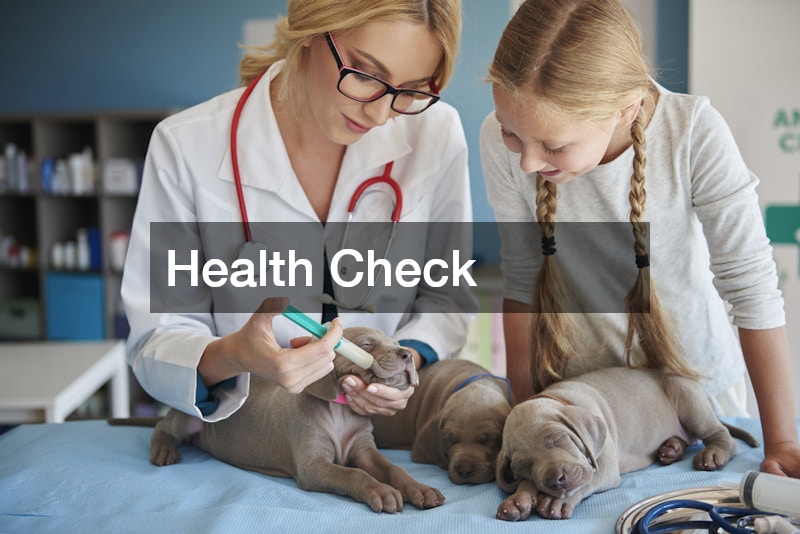
Building strong health habits early sets your new puppy on the right path for long-term wellness. Veterinary visits, vaccinations, and routine care help identify concerns early and keep your puppy protected from preventable illnesses. Establishing this foundation also gives you peace of mind as your companion grows.
One essential element of health care involves dog dental care, which plays a significant role in your pet’s overall well-being. Even a new puppy benefits from gentle oral hygiene routines that introduce them to tooth brushing and mouth handling. Over time, these habits reduce tartar buildup and prevent dental-related issues.
In addition to oral care, pay attention to signs of discomfort, appetite changes, or unusual behavior. Creating a long-term relationship with your veterinarian ensures your new puppy receives attentive and ongoing support. These early steps reinforce your pet’s health and strengthen the bond you share.
6. Training Prep
Training forms the framework for your new puppy’s behavior, helping establish boundaries, expectations, and communication between you and your dog. Early training reduces confusion, builds confidence, and supports positive behavior as your puppy learns how to navigate family life. Consistency is key and sets the stage for long-term success.
Enrolling in dog obedience training classes introduces your puppy to structure while helping you learn effective communication techniques. These classes expose your new puppy to new environments and controlled socialization, which support their confidence and reduce anxiety. The combination of professional guidance and at-home practice provides a strong developmental foundation.
Outside of formal sessions, reinforce commands through repetition and reward-based learning. Teaching your new puppy to respond to simple cues helps them feel secure and supported as they adjust to family routines. The more consistency you maintain, the more confident and well-behaved your companion becomes.
7. Social Needs
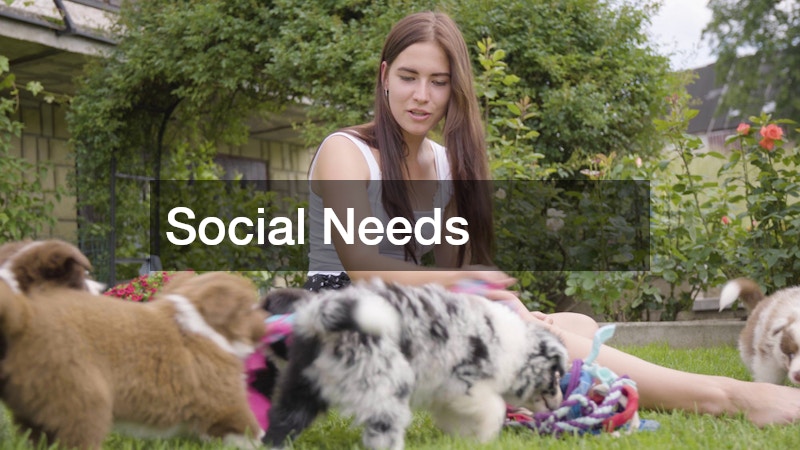
Socialization is vital to raising a well-adjusted new puppy, helping them learn how to interact with people, animals, and everyday environments. Early exposure to a variety of experiences prevents fear-based behaviors and supports emotional resilience. Balanced socialization leads to a dog that is friendly, confident, and adaptable.
Using a daycare service occasionally can help your puppy build positive interactions with supervised groups of dogs and trained staff. Introducing your new puppy to structured environments encourages comfort around new faces and activities. These experiences teach valuable skills that support long-term behavioral success.
Continue socialization by gradually introducing your dog to visitors, outdoor settings, and different sounds or surfaces. Each controlled encounter helps build confidence and familiarity. With regular exposure, your new puppy becomes more relaxed and capable in diverse environments.
8. Secure Yard
A secure outdoor area is essential for safe play and exploration, especially as your new puppy develops confidence and mobility. Yards provide space for exercise, fresh air, and training opportunities that support healthy growth. Ensuring this space is properly set up prevents accidents and escape risks.
Working with fence companies can help ensure your yard is secure and well-fitted to contain a new puppy safely. Proper fencing allows your dog to enjoy outdoor time without constant worry about wandering or encountering hazards beyond your control. Investing in this early improves long-term peace of mind.
As your dog grows, you can gradually introduce enrichment items like toys, shaded areas, or designated potty zones. This structure helps guide behavior and provides a safe outlet for energy. A secure yard becomes an essential extension of your new puppy’s daily routine.
9. Travel & Stays
Travel preparation is often overlooked until the need arises, but creating a plan early helps reduce stress for both your family and your new puppy. Whether you’re visiting family or scheduling future trips, your dog should be comfortable with transportation and new environments. Introducing travel gradually ensures smoother transitions.
Planning for dog boarding ahead of time ensures you have reliable support when longer absences occur. Touring facilities and selecting a trustworthy provider helps your new puppy adapt to new surroundings more easily. Early exposure makes future stays calmer and less intimidating.
To reinforce comfort, practice short car rides and crate familiarity at home. The more exposure your new puppy has to travel-related experiences, the more positive the long-term experience becomes. Preparation provides flexibility and confidence during future adventures.
10. Pest Safety
Maintaining a pest-free environment is critical for the health and comfort of a new puppy. Small insects and outdoor critters can carry diseases or cause irritation that affects your dog’s well-being. A clean, well-treated home also protects your family while supporting your pet’s safety.
Incorporating professional pest control into your home maintenance routine helps create a safe environment for your new puppy. These services reduce the risk of harmful pests entering your living areas and provide long-term protection. Keeping your dog away from harmful chemicals ensures safety throughout the process.
Regular inspections, proper waste removal, and maintaining a tidy yard also help deter unwanted visitors. With a consistent pest management plan, your new puppy can explore confidently without exposure to unnecessary dangers.
Preparing your home and family for the arrival of a new puppy is a thoughtful, rewarding process that lays the groundwork for a strong bond and a healthy future together. The ten tips outlined in this guide offer a comprehensive approach that addresses both the physical environment and the emotional support your companion needs. By taking time to organize your home, create safe spaces, establish feeding practices, and plan for training and socialization, you create a well-rounded framework for successful early development. A new puppy thrives when structure, comfort, and consistency are present from the very beginning.
These preparations also help your family stay confident and coordinated as you welcome this energetic addition into your household. From safety-focused steps like puppy-proofing and yard security to important routines such as grooming, health checks, and pest prevention, each choice you make contributes to a safer and more stable environment. As your dog grows, the habits established in these early days become the foundation for a lifetime of trust, comfort, and good behavior.
By following these ten tips, your household becomes fully prepared to welcome a new puppy with confidence and joy. This thoughtful preparation allows you to focus on bonding, learning, and creating meaningful memories as your companion begins their life with you. With a well-prepared family and home, you are setting the stage for a rewarding journey filled with love, consistency, and a lifetime of companionship.